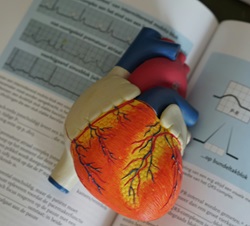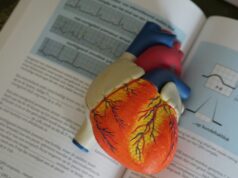 A catheter ablation procedure widely used to treat the most common heart rhythm disorder significantly reduces the burden of atrial fibrillation (AF), and results in clinically important improvements in symptoms and quality of life compared with a sham (placebo) procedure—according to late-breaking research from the SHAM-PVI trial presented at this year’s European Society of Cardiology (ESC) congress (30 August–2 September, London, UK).
A catheter ablation procedure widely used to treat the most common heart rhythm disorder significantly reduces the burden of atrial fibrillation (AF), and results in clinically important improvements in symptoms and quality of life compared with a sham (placebo) procedure—according to late-breaking research from the SHAM-PVI trial presented at this year’s European Society of Cardiology (ESC) congress (30 August–2 September, London, UK).
“Despite being widely performed in clinical practice, pulmonary vein isolation [PVI] ablation has never been compared with a sham procedure,” said SHAM-PVI principal investigator Rick Veasey (East Sussex Healthcare NHS Trust, Eastbourne, UK). “Our results provide conclusive evidence for the benefit of PVI ablation in individuals with symptomatic AF, putting concerns about a substantial placebo effect to rest.”
PVI is considered to be the cornerstone of catheter ablation for symptomatic paroxysmal AF, involving intermittent episodes of AF, as well as for persistent AF. During the procedure, catheters are inserted into the heart to deliver radiofrequency energy or cryoballoon ablation to destroy tissue on the veins that is causing disruptive electrical signals.
Despite numerous clinical trials advocating PVI for symptomatic AF, concerns that PVI has a substantial placebo effect have been raised—and, prior to Veasey and colleagues’ study, there had been no trials comparing PVI with a sham procedure.
In an attempt to fill this evidence gap, the SHAM-PVI trial enrolled and randomised 126 patients with symptomatic paroxysmal or persistent AF, previously treated with at least one antiarrhythmic drug, who had been referred for catheter ablation at two NHS trusts in the UK.
The patients were randomised in a 1:1 ratio to undergo either PVI using cryoablation, during which a balloon filled with liquid nitrogen is used to freeze the heart tissue that is causing the irregular heartbeat (64 patients), or a sham procedure involving phrenic nerve pacing to simulate an ablation procedure (62 patients). Demographic and clinical characteristics were well balanced between the groups.
The main measure of interest was AF burden—defined as percentage time in AF—at six months, excluding an initial three-month blanking period. This was assessed using a tiny implantable heart monitor placed under the skin. Other outcomes included important quality-of-life measures reported by patients, such as physical and social functioning, AF symptoms like palpitations and breathlessness, and time to arrhythmia events.
The researchers found that, at six-month follow-up, the average change in AF burden compared to the start of the trial was 60% in the ablation group and 35% in the sham intervention group. In addition, in patients with persistent AF, there was an average reduction in AF burden of 71% in the ablation group and 45% in the sham intervention group—and, in patients with intermittent AF, the average reduction in AF burden was 16% in the ablation group compared with an average increase of almost 3% in the sham intervention group.
Overall quality-of-life scores were found to be substantially in favour of catheter ablation at six months and, similarly, scores based on symptoms, daily activities and treatment concern favoured ablation as well. Another of the researchers’ key findings was that measures of health-related quality of life—for example, physical functioning, vitality, emotional wellbeing and social functioning—also improved much more in the ablation group than in the sham intervention group at six months.
“We expected that PVI would be more effective than a placebo procedure in patients with symptomatic AF and, indeed, the results proved our hypothesis was correct,” said SHAM-PVI lead author Rajdip Dulai (The Essex Cardiothoracic Centre, Basildon, UK). “Going forward, we would expect that patients with symptomatic AF be referred for ablation treatment without hesitation.”









